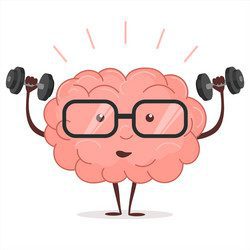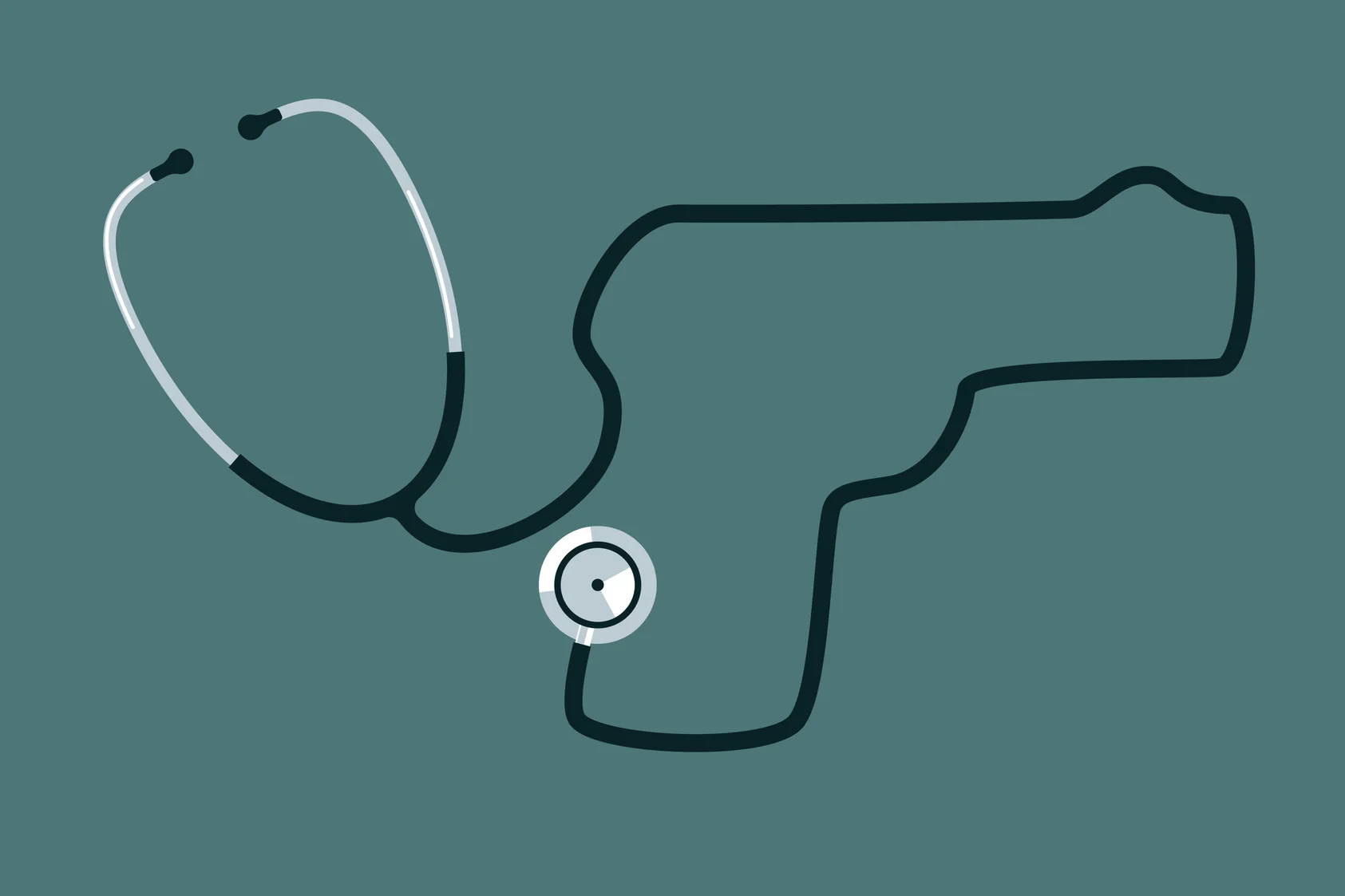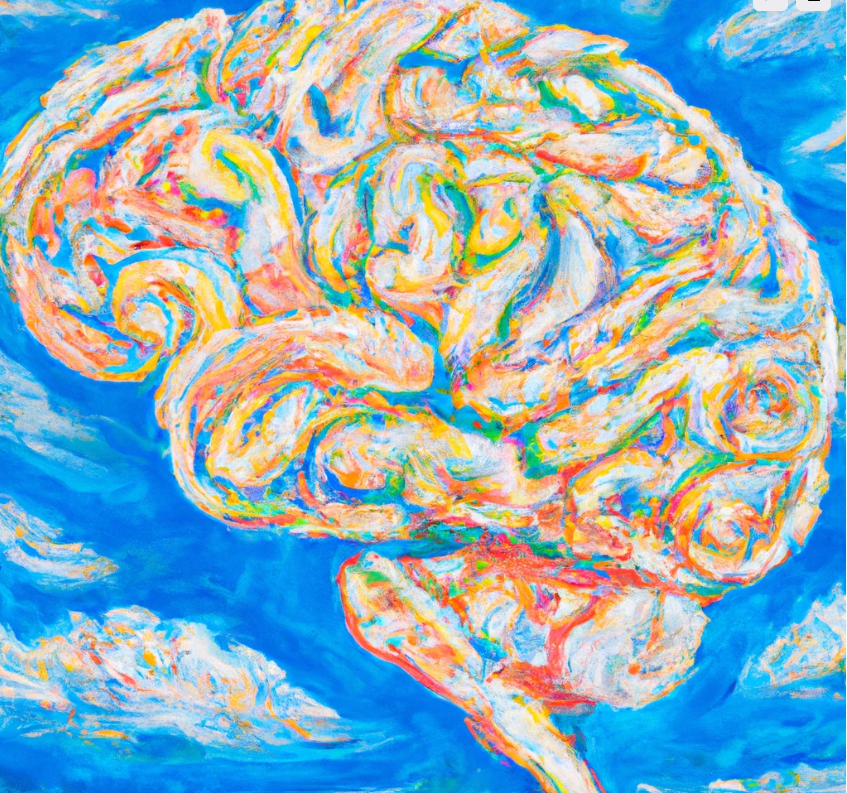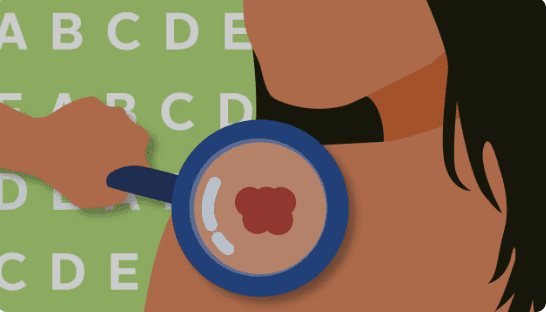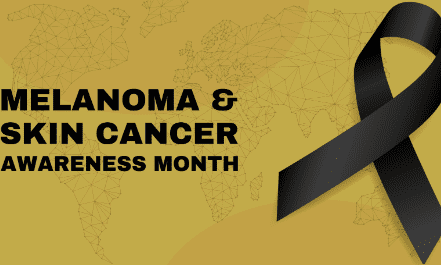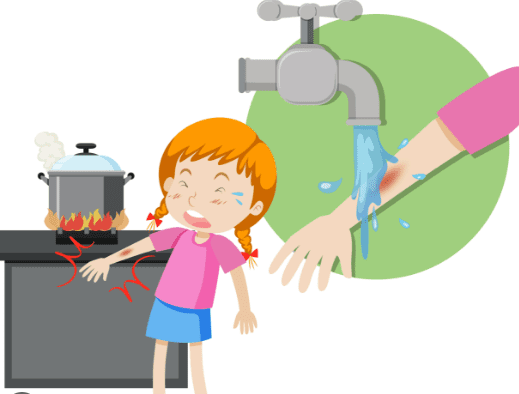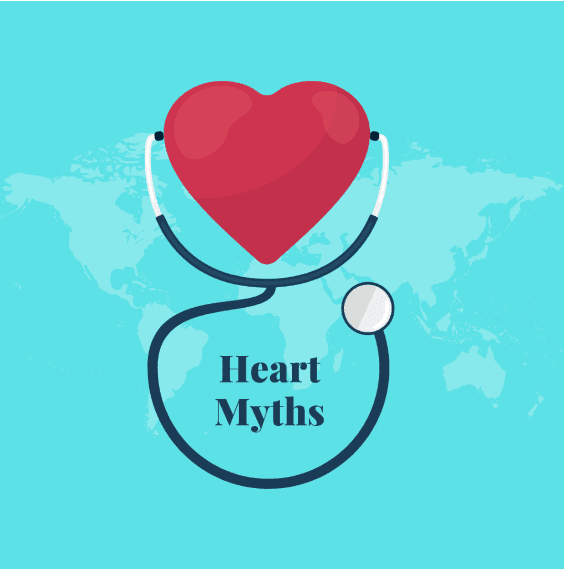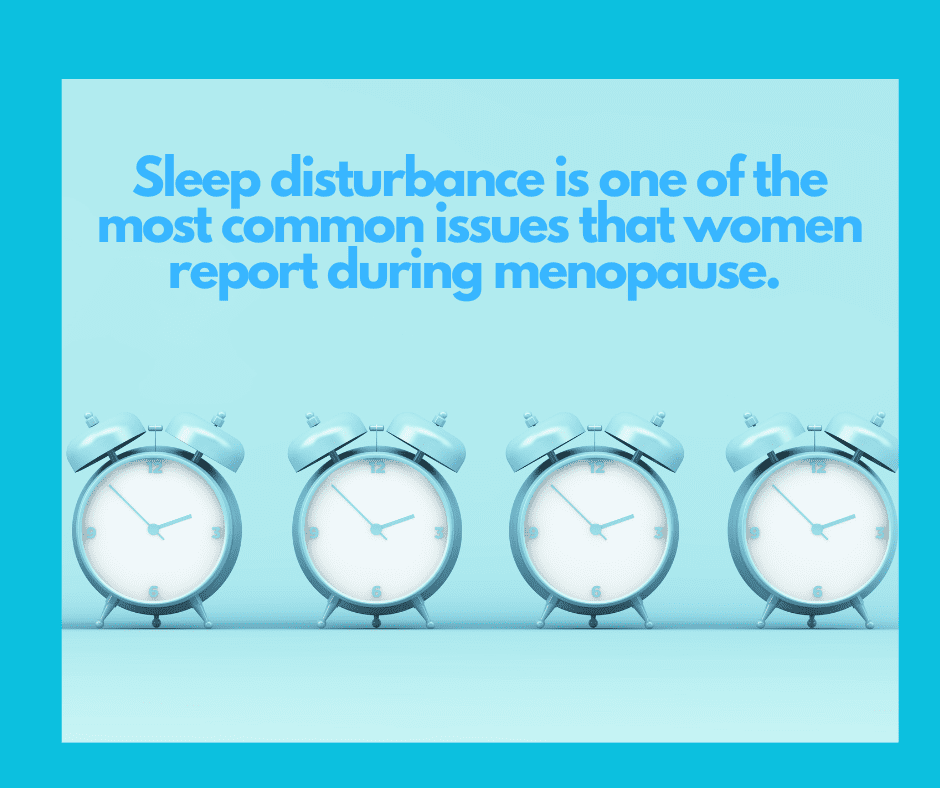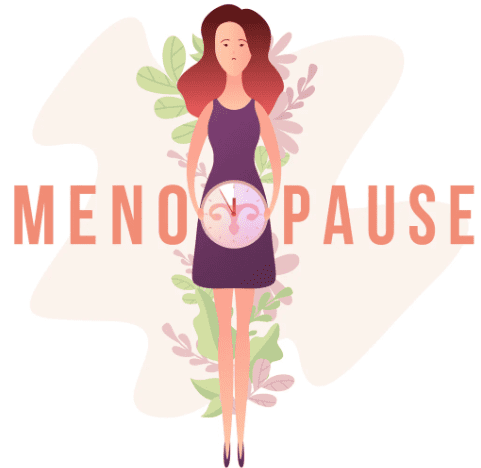Direct Primary Care Benefits Your Small Business Healthcare
5 Reasons Why Direct Primary Care is a Good Health Care Solution for Your Small Business
Introduction:
As a small business owner, providing comprehensive healthcare benefits to your employees is crucial. However, navigating the complexities of traditional healthcare options can be daunting and costly. There is an innovative approach that is now a viable alternative. It’s called Direct Primary Care (DPC) and today we look at how it might be a smart choice for your small business.

1. DPC saves you and your employees money:
One of the most significant advantages of DPC is its ability to lower healthcare costs for both employers and employees. With DPC, employees pay a flat monthly fee for access to primary care and urgent care services, eliminating the burden of copays and deductibles. By providing affordable, comprehensive care, DPC encourages employees to seek timely medical attention, avoiding costly emergency room visits. This cost-effective approach leads to significant savings for your business and your employees.
2. DPC Provides Timely and Convenient Care:
DPC Provides Timely and Convenient Care: In addition to cost savings, DPC offers enhanced convenience for your employees. With regular business hours, as well as after-hours, weekend, and holiday availability, employees can access primary care services when they need them the most. The ability to reach their primary care providers through phone calls or text messages ensures timely medical advice and eliminates the need for unnecessary emergency room visits or long waits. This convenient access to quality care fosters a healthier workforce and minimizes absenteeism, thereby boosting overall productivity.
3. DPC Improves Productivity with a Healthier Workforce:
By offering DPC as a healthcare option, you empower your employees to take control of their health proactively. Without the barriers of copays and annual premium increases, employees can easily seek primary care services for minor illnesses or medical issues. Through telemedicine or phone consultations, many health concerns can be addressed without requiring in-person visits. This approach reduces time away from work, promotes employee well-being, and enhances productivity within your small business.
4. DPC Enhances Your Benefits Package and Company Culture:
In today’s competitive job market, attracting and retaining talented employees is vital. By offering DPC as part of your benefits package, you differentiate your business and create a more appealing work environment. The cost savings associated with DPC enable you to provide competitive health benefits while reducing your overhead. By demonstrating your commitment to employee wellness and personalized healthcare experiences, you cultivate a positive company culture that fosters loyalty and engagement among your workforce.
5. DPC Helps Attract and Retain Talented Employees:
Studies have shown that access to DPC healthcare through an employer is a significant factor in employee satisfaction and retention. By providing personalized healthcare experiences and promoting a healthier and happier workforce, your small business becomes an attractive employer of choice. Furthermore, DPC allows for easy inclusion of employees’ spouses and children, offering comprehensive care for their entire families. This inclusive approach further strengthens your employee benefits package and sets your small business apart from the competition.
In Summary:
Direct Primary Care (DPC) presents small businesses with a compelling alternative to traditional healthcare models. By offering cost-effective care, convenient access, improved productivity, and a competitive benefits package, DPC can be a win-win solution for both employers and employees. Embracing this innovative approach demonstrates your commitment to employee well-being and positions your small business for long-term success in today’s dynamic business landscape. Explore DPC as a valuable option for your business and reap the benefits of high quality health care at a fraction of the price of traditional health insurance for your company.
Unlocking the Secrets of Incontinence: Reclaiming Control and Confidence
Drips and Leaks…
what is urinary incontinence?
Urinary incontinence is the accidental loss of urine. It is more common than most people are aware of. 25 million adult Americans experience temporary or chronic urinary incontinence. It can range from the discomfort of slight losses of urine to severe, frequent wetting.
What causes urinary incontinence and what to do about it?
It is caused by specific changes in body function that may result from diseases, use of medications and/or the onset of an illness. Women are most likely to develop urinary incontinence during pregnancy and after childbirth, or after the hormonal changes of menopause.
Although these conditions are incredibly common, women often suffer in silence. Some find these symptoms embarrassing and refrain from discussing them with friends or family members. Women should understand that leakage is NOT a normal part of aging and that goals of treatment include minimizing and eliminating the need for the use of pads as a self-management strategy.
Fortunately, the diagnosis and treatment of incontinence can dramatically improve the quality of life of women who suffer from these conditions.
How is urinary incontinence diagnosed?
Urinary incontinence is not normal and it is important to consult with your doctor. Urinary incontinence is diagnosed with a complete physical examination that focuses on the urinary and nervous systems, reproductive organs, and urine samples.
The common types of urinary incontinence are:
- Stress incontinence—With stress incontinence, urine leakage occurs when the bladder is under pressure, such as when a person laughs, coughs, sneezes or exercises.
- Urge incontinence—Urge incontinence involves a strong, sudden urge to urinate that results in leakage. These types of incontinence are defined by their causes. Many women may experience a combination of both stress and urge incontinence — a condition commonly referred to as mixed urinary incontinence.
- Mixed Incontinence- A combination of both types

What is the treatment for urinary incontinence?
Specific treatment for urinary incontinence will be determined by your doctor based on what type of incontinence it is, the extent of the symptoms, any underlying medical conditions, and patient preference.
Treatments may include:
- Behavioral therapies: such as bladder training or toileting routines
- Diet modifications: Eliminating bladder irritants, such as caffeine, alcohol and citrus fruits.
- Pelvic muscle rehabilitation: to improve pelvic muscle tone and prevent leakage and possibly biofeedback as well as vaginal weight training.
- Medication : vaginal estrogens and anticholinergics
- Modifying contributory factors: weight loss, eliminate medication side effects, treat constipation
- Office procedures, Pessary, Surgery
Each person deserves an individualized consult with their physician regarding symptoms, diagnosis, and management for urinary incontinence.
Recognizing Emergency Warning Signs For Headaches
Headaches Unveiled
Headaches are common… but What are the Emergency Warning Signs that tell you to seek care Immediately?
Almost everyone has had a headache at some point. Headaches can be due something as simple as uncontrolled allergies to something as serious as a life-threatening aneurysm.
Here we review the most common headache causes AND what the most concerning warning signs are that help you know when you should seek immediate care.
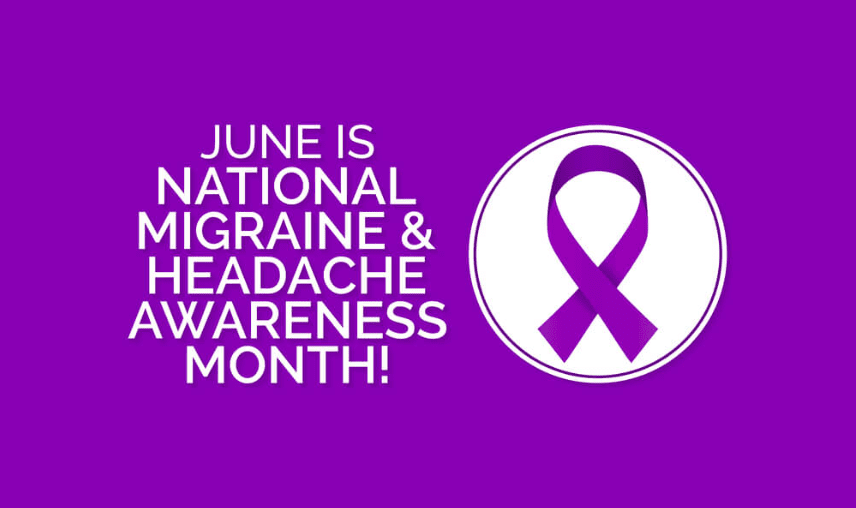
The most common type of headaches is “tension-type” headaches.
Tension-Type headaches are most often caused by one of the following:
- excessive caffeine intake
- alcohol intake
- vision problems
Correcting the underlying problem relieves these headaches.
When should I be concerned about a headache?
Headaches can be a sign of a life-threatening emergency. The following signs are reasons to seek care immediately:
- It is the all-time worst headache ever
- The headache is worst upon waking
- There was loss of consciousness
- Uncontrollable vomiting
- Loss of vision

Brain Health Matters
Brain awareness JUNE 2023
Brain health matters… it helps to keep us sharp and staves off the effects of dementia. There are lots of great things you can do to keep your brain healthy and there has never been a better time to start than now!
Keeping Your Brain Strong
Eating Healthy, Exercising Daily, Getting Plenty of Sleep, Paying Attention to Your Mental Health and Socializing with others are critical components to brain health. Today we are going to focus on the most important Tip for Brain Health: Continuing to Learn New Skills.
Use it or Lose It.
Become a lifelong learner to keep your brain active and healthy. Engage in activities that stimulate your brain!
Every time you learn something new you build new connections between your brain cells and the more stimulated your brain is, the more active it becomes. Challenging the brain is key.
- travel to new places
- learn a new language
- take a course
- play a new game: puzzles, chess, workbooks
- read a book
- draw or paint
- listen to new music
- learn new recipes
- play a musical instrument: piano is thought to engage both left and right brain at the highest level
Public Health Epidemic of Gun Violence
Gun Violence – A Public Health Crisis
Sadly, firearms are the leading cause of death in children in the United States. These deaths are completely preventable and occur at a rate more than 5x higher than drownings.
June is National Gun Violence Awareness Month.
TOP TIPS for PREVENTING FIREARM DEATHS
As with any health-related problem, prevention through education is a critical component. Did you know that firearms are present in 1/3 of households with children?
- The best way to keep children safe is NOT to have a gun in the home.
- If it is necessary to keep a gun in the home, safe storage is critical. Guns should be kept unloaded and ammunition should be stored separately. Both should be locked and inaccessible.
- Parents should speak to caregivers in homes where young children are visiting/playing about guns in caregivers’ homes.
- Talk to older kids about guns and safety.
9 Critical Warning Signs of Violence
In almost every documented case of active shooters, there were warning signs. In 4 out of 5 school shootings at least one other person had knowledge of attackers plan but failed to report it.
- Suddenly withdrawing from friends, family and activities (including online or via social media)
- Bullying, especially if targeted towards differences in race, religion, gender or sexual orientation
- Excessive irritability, lack of patience, or becoming angry quickly
- Experiencing chronic loneliness or social isolation
- Expressing persistent thoughts of harming themselves or someone else
- Making direct threats toward a place, another person, or themselves
- Bragging about access to guns or weapons
- Recruiting accomplices or audiences for an attack
- Directly expressing a threat as a plan

Reporting warning signs of violence is critical to decreasing the risk of gun violence in our community.
Advocacy to protect children from gun-violence must take place at a national level to have meaningful impact. Basic measure such as stopping assault weapon sales and advocating for high-capacity magazine limits, alongside ammunition regulation, required background checks, and increasing gun manufacturer liability will be critical.
Mental Health Awareness Month
Is It Stress or Anxiety?
Mental Health Awareness Month
Everyone experiences stress, and sometimes that stress can feel overwhelming.
You may be at risk for an anxiety disorder if it feels like you can’t manage the stress and if the symptoms of your stress:
– Interfere with your everyday life.
– Cause you to avoid doing things.
– Seem to be always present.
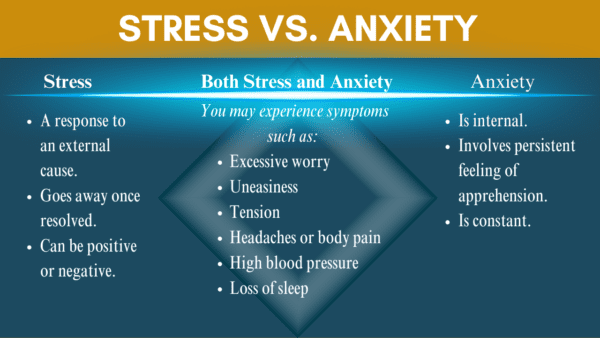
Practice Self-Care for your Mental Health: Build a toolbox full of healthy ways to cope
Simple, everyday actions:
–schedule quiet time for meditation, yoga, or reading
–spend a few minutes in nature, getting out to exercise, or playing a favorite song can help you feel grounded
–stick to a sleep routine to ensure enough sleep
–keep a journal
–connect with others in your community
Mental Health Awareness
Your Mental Health at Midlife
Experiencing LOTS of ups and downs? No… you’re not crazy….its part of middle age.
Do find yourself loving life and feeling fabulous one day and having difficulty with overwhelm and gloom the next? Have you found yourself loosing it… over little stuff? Feel like you’re on an emotional roller coaster? Welcome to middle age.
This is a time when our bodies and minds experience tremendous change, both physically and emotionally. Kids may be leaving the home or you might be transitioning careers after decades. It’s often when we need to deal with parents’ health issues or our own. For many, this is a time when some long-term relationships end or starting new relationships or choosing time alone.
So give yourself a break… you have a lot going on right now in your life!
You must fill your own cup first… Self-care becomes even more critical as we age.

7 QUICK TIPS/TRICKS TO BOOST MINDSET AND IMPROVE MENTAL WELL-BEING:
1. Regular exercise reduces the risk of depression and improves mood
2. Ensuring adequate sleep that is restful and restorative is imperative
3. Quieting the mind through and directing thoughts utilizing tools
4. Training the brain with habit formation techniques
5. Social interactions creating supportive relationships to stay grounded
6. Prioritization, delegation, and time management skill building through education
7. Awareness around feelings and emotional responses
Tips for Early Detection of Skin Cancer
What are the skin changes you should not ignore? Skin cancer is the most common form of cancer in the United States. Knowing how to do a skin self-exam and what the warning signs are for melanoma are the key for decreasing risk. Follow these tips to increase your chances of spotting skin cancer early, when it’s most treatable.
How to perform a skin self-exam
Examine your body in a full-length mirror-Examine your body front and back in a mirror, then look at the right and left sides with your arms raised.
Look at your underarms, forearms, and palms-Bend your elbows and look carefully at your forearms, underarms, and palms.
Look at your legs, between toes, and soles of your feet-Look at the backs of your legs and feet, the spaces between your toes, and the soles of your feet.
Use a hand mirror to examine your neck and scalp-Examine the back of your neck and scalp with a hand mirror. Part your hair for a closer look at your scalp.
Use a hand mirror to check your back and buttocks-Finally, check your back and buttocks with a hand mirror.
If you notice any new spots on your skin, spots that are different from others, or spots that are changing, itching or bleeding, make an appointment to see a board-certified dermatologist.

Remember the “ABCDE rule”
Note changes in moles or birthmarks that can be warning signs of melanoma, the deadliest form of skin cancer.
A-Asymmetry where one half looks different from the other
B-Borders of the mole that are irregular or not sharply demarcated
C-Color is varied from one area to another
D-Diameter over 6mm (the size of a pencil eraser)
E-Evolving or changing in size shape or color
Protecting Your Skin
SKIN CARE this SUMMER
Summer is almost here…. and with it comes lots of outdoor activities. Protecting your skin from the sun is imperative. Did you know that skin cancer is the most common type of cancer?
The good news is that skin cancer can be prevented and it can almost always be cured… when it’s found and treated early.
4 Simple Skin Cancer Prevention Tips:
-Seek the shade between 10am-4pm
-Do NOT get a sunburn
-Use broad spectrum sunscreen SPF 30 or higher and reapply after 2hours
-Examine your skin once a month

ABCs for burns.
Burns Happen.
We all use things that are hot, flammable, or explosive and don’t think much about the risks… until we get burned.
Thermal burns are the ones we all think of…. Touching a hot iron for example. These are obvious hazards, but there are more severe burns you might not think of often.
Chemical burns are not as rare as you might think. One of my patients had some batteries explode in her pocket and burn her skin. She called and was directed to immediately irrigate with water.
Today we will go through the ABCs of burns and what to do if you have a burn.
Bottom line: Burns happen and there are steps that need to be taken immediately to improve the odds for successful healing.
What is the Basic Care for Burns?
Treating burns early is actually the most important:
- Remove the cause of the burn.
Immediately remove the cause of the burn from the affected area. If there is grease or chemicals on your skin (or clothing that’s caught fire), you need to remove the continued source of the burn as quickly as possible.
For chemicals you may need to double check that nothing is continuing to cause damage. In the case of my patient, the battery got into her shoe and it was not noticed right away. It caused more damage to her foot than her thigh because it was not treated as quickly.
- Treat the area with cold water.
Leave any affected burn areas under cold water for 10 minutes. This time is essential in reducing the heat in the skin and stopping the burn’s progression. You may even want to irrigate with water for longer depending on the type of chemical burn and extent.
- Evaluate the burn.
After 10 minutes of treatment with cold water, assess the existing damage and plan for needed treatment. Call your physician for guidance. If you’re traveling to a medical facility, keep a cool compress on the area while you travel, if possible.
- Keep the burn clean.
Burns break down skin and often breed infections that can be severe. Removing debris that might contain bacteria and keeping the area clean is important.
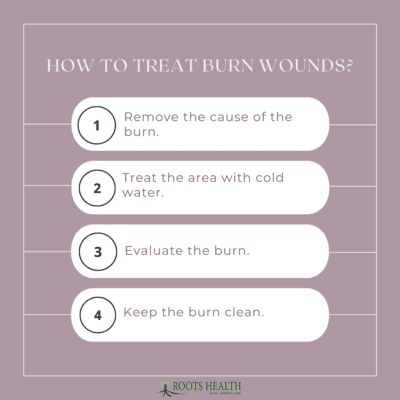
When do I need to seek Immediate Medical Care?
In specific cases, you should seek professional treatment for a burn immediately.
Circumferential Burns
If a burn area stretches all the way around a body part — like your finger, wrist, or leg — you absolutely need to see a doctor for evaluation and treatment.
Large Burns
When it comes to wound care for burns, a rule of thumb is that you can estimate burn size by thinking of your palm as 1% of your body area, while your arm or leg is closer to 9%. Different percentages of burned skin require different levels of medical attention, but suffice it to say if you have burn on 10% of your body you need to seek medical attention immediately.
What are the Next Steps for Burn Management?
In addition to caring for the burn itself, you’ll also need to deal with other issues related to your injury. To give your body time to heal, you’ll need to address two variables:
- Infection: Your skin is your body’s main defense against infections. When you burn your skin, you’re literally burning away your number one infection defense mechanism. Keep the burn site clean to avoid complications.
- Pain management: Burn wounds are notoriously painful. Talk to your doctor about medication options for pain management.
- Wound care: Evaluation of severity and which layers of tissue are affected will determine treatment. Consult with your doctor and consider Silvadene, commonly used cream that has both antibacterial properties and can promote wound healing.
Wound Care for Burns: Final Thoughts
If you find yourself questioning whether you should seek medical attention for a burn, seek medical attention. One advantage of our direct primary care model is that patients have a direct line to their doctor they can use at any time. My battery burn patient was able to call me immediately after her injury, and I could assist her in real time as she texted me pictures of the burns. We saved her thousands in hospital bills and follow up care because we were able to manage her care immediately to prevent ongoing damage.
Preventing heart disease is better than curing it.
Heart Disease: An ounce of prevention is worth a pound of cure.
Heart Disease is the number one killer for women…. knowing your risk is half the battle.
Heart disease is often preventable for women. The following lifestyle changes help lower risk and protect your heart.
Maintain a healthy weight
Being overweight can raise your blood pressure, cholesterol, and increase risk for diabetes.
Losing 5% to 10% of your body weight can lower blood pressure, cholesterol, and the risk of developing diabetes.
Quit smoking
Smokers have more than twice the risk for heart attack than do nonsmokers. The risk for blood clots also increases, which can cause stroke.
Get Active
Strive for regular moderate to high intensity physical activity. This can be done in 30 minute chunks, 5 days a week. Aerobic exercise reduces your risk of heart disease.
Change your fats
Change the fats in your diet. Avoid saturated fats. Substitute olive oil for butter. All fats are high in calories so use them sparingly to avoid weight gain.
Also limit the following:
• Full-fat dairy products
• Fatty meats
• Partially hydrogenated vegetable oils
• Convenience or other prepared foods high in fat
Eat fruits and veggies
Eat plenty of produce. We recommned eating at least 3 cups of vegetables and 2 cups of fruits daily, depending on your calorie needs. Diets high in fruits and vegetables are linked to lower blood pressure and a reduced risk for heart disease.
Fiber up
Soluble fiber helps reduce cholesterol. Oatmeal, whole-grain bread, and other whole-grain foods are excellent sources of this nutrient.
Drink alcohol only in moderation
Women should limit alcohol to no more than 1 drink per day. That’s equivalent to 12 ounces of beer, 4 to 5 ounces of wine, or 1.5 ounces of 80-proof spirits.
Strategies for Overcoming Heart Disease
A Woman’s Guide to Beating Heart Disease
Few women think heart disease is their greatest health threat. That thought could not be further from the truth. Unfortunately, it’s the nation’s number one killer, and women are its prime target. Over one-third of the women who die in the U.S. each year die of heart disease. In fact, more women die of heart disease each year than breast cancer.
The risk of heart attack and stroke increases with age. Women can start protecting themselves early to avoid heart disease.
Knowing your risk
Things that put women at risk include:
• Being postmenopausal
• Having had a hysterectomy
• History of or currently using birth control pills
• Being pregnant and having complications including diabetes or pre-eclampsia

Credit to: My Happy Doctor
The following things put both women and men at risk for developing heart disease:
• Personal history of heart disease or stroke
• Age over 55
• Family history of heart disease
• High blood pressure
• High cholesterol
• Diabetes
• Past or current smoker
• Getting little or no exercise
• Obesity
• High-stress life
Knowing risk factors is half the battle towards beating heart disease. You can lower your risk of heart disease through preventative measures. Keep an eye open for our blog on prevention next week where we will do a deep dive on how to prevent heart disease.
debunking Myths about Heart Health
Debunking Myths: Women and Heart Health
Myth: Heart disease is a man’s disease
Fact: Heart disease is kills more women than men. Heart disease is the cause of one out of every three deaths and is the leading cause of death for women.
Myth: Heart disease only happens to older women
Fact: Heart disease affects women of all ages. For younger women, the combination of birth control pills and smoking increases heart disease risks by 20 percent.
Myth: If women are fit they are not at risk
Fact: The risk for heart disease is not eliminated if you exercise regularly. Factors like cholesterol, eating habits, high blood pressure, diabetes, and smoking directly affect risk.
Myth: Heart disease always has symptoms
Fact: The majority of women who die suddenly of coronary heart disease had no previous symptoms. Symptoms vary greatly between men and women. Women are often underdiagnosed or undertreated which can lead to higher mortality rates.
Myth: If heart disease runs in my family, I can’t do anything about it
Fact: Women with a family history of heart disease are at higher risk, but there’s tons that can be done to dramatically reduce risk. Women should discuss their personal risk factors with their healthcare provider and undergo regular screenings for blood pressure, cholesterol, and other heart disease risk factors.
What is Direct Primary Care?
Direct Primary Care. What is it?
I already pay a ton for health insurance…. aren’t those services covered?
Most of us know that trying to use our health insurance is a painful process. In general, we find it impossible to get the care we need without creating a massive headache. In the end, we spend additional time and money trying to get the “care” that our insurance “covers.” We are all familiar with the hassle typically experienced when trying to get an appointment or speak to a doctor. Often, we end up with end up coming out-of-pocket for our copays and deductibles… sometimes paying hundreds or thousands of dollars annually. These expenses are paid in addition to our already high-priced monthly premiums that take a large chunk of our income every paycheck. Sometimes we avoid seeking healthcare altogether because it is such a hassle.
You may have already even tried to solve for some of the health care hassle by changing to a lower cost plan or choosing a different provider who is supposed to be “better.” But even when you really need health care… you might still consider “waiting it out” because the hassle of dealing with a health issue is harder than not dealing with it.
Direct Primary Care (DPC) is changing everything about your health care experience as you know it.
DPC offers a solution that saves you both time and money. You can now easily access the health care you need in a timely manner that his hassle-free without long waits or surprise bills.
DPC provides transparent pricing with a low monthly membership fee. There are no copays. There are no out-of-pocket dollars spent to meet your deductible. For example, if you end up needing to need an MRI, labs, medications, or an urgent care visit… the savings on these services alone often cover the entire cost of your membership for a year. The cost-savings in DPC do not even begin to touch the tremendous value of the superior care provided and the amount of time and hassle saved for patients.
Our patients do not avoid seeking care. They know they deserve to have easy access to their doctor especially when they are sick. We make it easy for them to reach us directly. No waiting.
We do not believe in automated messaging systems, sitting for hours waiting to be seen, or waiting for days to get a call back from your doctor.
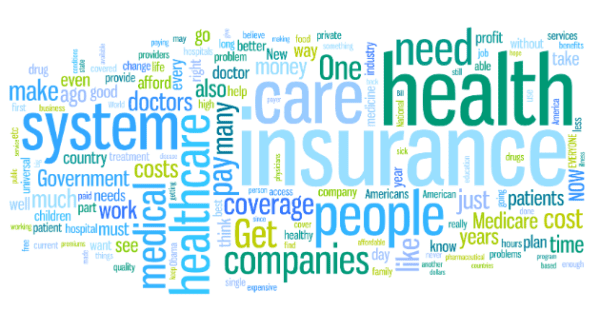
It’s simple. We do what’s right for our patients. Every. Single. Time.
Avoiding care because it’s a hassle, spending an inordinate amount of time trying to get the care you need, and receiving bills you were not expecting after your care has been provided are the status quo for the health care experience. Can you really afford not to try something different?
Is Hormone Therapy safe?
What’s the deal with Hormone Therapy? Is it safe?
After the Women’s Health Initiative study done in the early 2000s that demonstrated an increased risk of cardiac events, strokes, blood clots and breast cancer was terminated early, many believed HRT to have more risk than benefit. The number of women taking HRT dropped from 20% to 5% nationwide. One of the flaws in the study was that the women enrolled were over 60y old. For women 50-59years these risks are slightly increased but no where near as drastic as the original study.
The answer to safety is not an “all or none” proposition. HRT is not “good’ or “bad.” As with any treatment, the benefits and risks must be weighed for each individual woman. Remembering that menopause is a chapter in life and not forever helps. Discussing “how long” these symptoms will last or when and which ones warrant treatment is a conversation to have with your physician.
Hormone Replacement Therapy (HRT) is not a panacea for the changes that occur in menopause throughout the body. Often there are better medications to treat a lot of these specific changes. For example, it is not generally recommended to try to prevent osteoporosis with HRT. Additionally, we would not treat mood disorders that become unmasked during this transition period with HRT.
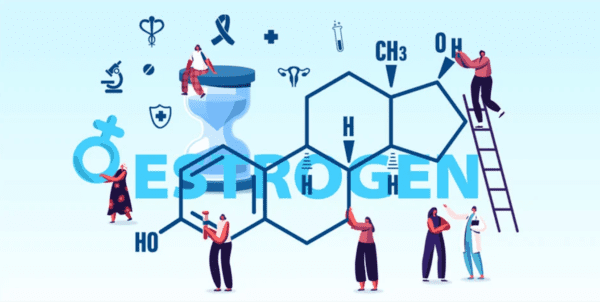
There are so many symptoms… which ones warrant consideration for HRT?
- Severe vasomotor symptoms occurring every hour or two and disrupting daily life (not responsive to behavioral/lifestyle modification)
- Vasomotor symptoms that are interfering with sleep
- Vaginal atrophy or Urinary Dysfunction
Who might be a candidate for HRT?
- In general, women who are less than 60 and less than 10 y from menopause.
- Women without a history of heart disease, stroke, blood clots, or breast cancer.
Isn’t HRT just pills?
- Not all HRT is created equally and there are numerous different modes of delivery for Estrogen.
- Pills by mouth can decrease testerone affects on hair loss and acne, while patches have a lot less risk of blood clots and stroke than pills.
- Vaginal symptoms alone are best treated with cream or rings that produces only local estrogen exposure.
- All women with a uterus taking estrogen will need to get progesterone in pill form or as an IUD as well to decrease risk for endometrial cancer.
What about “bioidentical” hormones?
- Bioidentical hormones just means they have the same molecular structure we produce naturally. Estrogen patches and prometrium are FDA approved bioidenticals that are prescription medications.
- People often refer to compounded formulations as bioidentical hormones… with compounded formulations there is not a lot of safety data and no regulation.
At Roots Health DPC we use the NIH Breast Cancer Risk Assessment Tool (NCI) to assess risk for breast cancer. We assess for risk for cardiovascular disease as well when we discuss HRT treatment options so that patients can make informed decisions.
Not all HRT is equal and topical treatment options do not have the same systemic system side effects as pills and may be just as effective. A great resource for patients is NAMS (North American Menopause Society).
What you need to know about HOT FLASHES
HOT FLASHES: What you need to know.
Hot flashes are the most common menopause-related symptom, affecting over 75% of women in midlife. Let’s discuss triggers, symptoms, and treatments. The most Frequently Asked Questions.
What is going on during a hot flash?
The small blood vessels near the skin surface are dilating, which causes heat release and flushing. So why does this even happen? As estrogen levels drop, changes in the hypothalamus in our brain cause dysfunction of the natural internal thermometer. The feeling of warmth results from inappropriate peripheral vasodilatation with increased blood flow to skin. Perspiration results in rapid heat loss and a decrease in core body temperature below normal. Shivering may then occur as a normal mechanism to restore the core temperature to normal.
What provokes hot flashes?
Hot flashes can last anywhere from 2-4 minutes and commonly occur related to these situations:
- Drinking hot liquids (coffee, tea, hot water)
- Drinking alcohol
- Eating spicy foods
- Taking a hot shower
- When stressed, excited, anxious
- When overly physically active
- When overdressed or wearing tight-fitting clothes
- As a side effect of some medications
It is important to know that hot flashes and/or night sweats can be indicative of other diseases (carcinoid, pheochromocytoma, POTS, certain cancers).

When to consider hormonal treatment.
In general, if the symptoms are happening every hour or two and interfering with your functioning or if the symptoms are interfering with sleep, we recommend speaking to your physician about hormonal options available.
Next week we take a deep dive into Hormone Replacement Therapy… the good, the bad, and the ugly.
Hormonal Sleep Disruption
Hormonal Sleep Disruption
We know that restorative sleep is foundational for overall health by reducing internal inflammation, including cortisol levels and other stress-related hormones. Sleep improves cardiovascular and cognitive health as well as restoring our immune health to be better equipped to fight infection.
Unfortunately, for women transitioning into menopause, nearly half report sleep disturbance and approximately one third go on to develop chronic insomnia.
For many, there can be an overlap of night sweats and hot flashes (vasomotor symptoms), mood disturbances, circadian rhythm disruption and other causes for sleep disturbance, taking on a myriad of manifestations. Quite often it is marked by difficulties falling sleep, restless sleep, or wakefulness throughout the night.
Estrogen influences the brain activating serotonin, norepinephrine, and dopamine neurotransmitters pathways within the brain. As estrogen decreases, these neurotransmitter pathways can be disrupted, affecting many components responsible for initiating and promoting restful sleep, as well as regulation of internal temperature (think hot flashes and night sweats).
In addition to hormonal changes, general life stress, underlying mood disturbances like depression and anxiety, primary sleep disturbances (sleep disordered breathing and restless legs syndrome) and other conditions can further erode sleep quality. The effect of hormonal changes can compound and significantly worsen each condition.
The factors leading to insomnia are complex, but a good night’s sleep is still within reach! There are many options for treatment. I recommend collaborating with your physician for restful and restorative sleep again. Are you looking for a physician who “gets it” and empowers you to make decisions that work for your health?
Tips for Improved Sleep During Perimenopause
Even though not directly implicated in hormonal sleep disturbance, general sleep hygiene is always recommended.
• AVOID “screen time” for 60 to 90 minutes before bedtime
• Consider using an orange light bulb in the bedside lamp so that you can read without inhibiting melatonin
• AVOID alcohol
• Exercising at least 2 hours before bedtime
• Keep your room cool

Women with vasomotor symptoms (hot flashes and night sweats) that interrupt sleep may be candidates for hormone replacement therapy. Isoflavens (soy), omega-3 fatty acid supplements and other non-hormonal medications are also options.
Hormonal changes in perimenopause can bring out mental health disorders that are linked to poor sleep. Sometimes it can unearth serious underlying mental health conditions like depression, anxiety and PTSD. Some women have mood disturbances that respond to medications that affect neurotransmitters like SSRIs (escitalopram/Lexapro or sertraline/Zoloft), SNRIs (venlafaxine/Effexor) or dopaminergics (bupropion/Wellbutrin). With seasonal symptoms, light box therapy can be beneficial as can exposure to natural light throughout the day.
Consider an evaluation for sleep-disordered breathing syndromes (like sleep apnea) which may present in women more as fatigue and decreased cognition (and not necessarily snoring which may present more commonly in men).
General stress management techniques like mindfulness-based stress reduction, meditation, yoga, and deep breathing exercises may be helpful.
Sleep is key to our health and well-being. The factors that determine your ability to get a good night’s rest are complex and unique to your body. With the right approach, you can have restorative sleep again. Want to learn more about peri-menopause, symptoms, and treatment options? Let us send you our weekly newsletter for free.
Reinvention and Menopause
Reinvention and Menopause: A Weighty Subject.
Perimenopausal symptoms can vary greatly and last for just months or several years. Every woman is different, but the menopausal symptoms are interconnected and directly influence one another. Women often find that what has worked in the past, will no longer work in the future… and so it may be beneficial to look at this as a time of “reinvention” of both body and spirit. It is a great time to use the wisdom accumulated over the years to adapt at navigating the many changes that come during mid-life. Perimenopause is the physical “change” that mirrors a reflection in time when women find themselves transitioning in many aspects of their lives including career change, children becoming independent, caring for aging parents, and new illness for themselves or their spouse. Women may have put the needs of others in front of their own for decades and now find that pivoting to self-care and creating a supportive system is imperative to their own success.
Weight gain is something that comes up A LOT and being overweight does have inherent health risk.
I often hear women say, “I haven’t changed anything, and I’m gaining weight.” Seemingly overnight, a diet and exercise routine that’s helped you maintain a healthy weight for most of your adult life isn’t working the way it once did. The rules of your body have changed. In perimenopause, maintaining your usual weight can become more difficult. In fact, many women gain weight around the menopause transition. Menopause weight gain is not inevitable, however. Importantly, weight gain can increase risks to your health and should not be ignored.
What causes menopause weight gain?
The hormonal changes of menopause can make you more likely to gain weight around your abdomen than around your hips and thighs. Hormonal changes alone are not the sole culprit of menopause weight gain. Weight gain is often tied to aging, lifestyle, and genetic factors.
For example, muscle mass typically diminishes with age, while fat increases. Losing muscle mass slows the rate at which your body uses calories (metabolism). This can make it more challenging to maintain a healthy weight. If you continue to eat as you always have and don’t build muscle mass or increase activity level… you’re likely to gain weight.
How risky is weight gain after menopause?
There are risks associated with excess weight, especially in the midsection, increases risks of DM, high blood pressure as well as heart disease and both breast and endometrial cancer. You can reverse course by paying attention to healthy-eating habits and leading an active lifestyle.
What’s the best way to prevent weight gain after menopause?
There’s no magic pill. These lifestyle habits are more important as we get older and self-care becomes imperative to our success.

- Exercise. Physical activity, including aerobic exercise and strength training, can help you shed excess pounds and maintain a healthy weight. As you gain muscle, your body burns calories more efficiently — which makes it easier to control your weight.For most healthy women at least 150 minutes a week or vigorous aerobic activity is recommended.In addition, strength training exercises are recommended at least twice a week.
- Nutrition. To maintain your current weight — let alone lose excess pounds — you might need about 200 fewer calories a day less than you did before. To reduce calories without skimping on nutrition, pay attention to what you’re eating and drinking. Choose more fruits, vegetables and whole grains, particularly those that are less processed and contain more fiber. In general, a plant-based diet is healthier than other options. Legumes, nuts, soy, fish are good choices. Anti-inflammatory and antioxidant-rich foods are key. Drink more water daily.
- Stress Management. Ensuring you have intentional time away from stressors and incorporate healthy coping techniques into daily habits.
- Sleep and Mood. Sleep disturbances and mood disorders are critical to manage in the menopausal period and they directly influence weight gain. It is crucial to address these issues to ensure that you are getting adequate and restorative sleep and have the energy level required to create a healthy lifestyle.
- Limit Alcohol Intake. Drinking alcohol can cause weight gain, interfere with sleep, and make menopause symptoms worse.
As women transition into menopause there is a dearth of resources and support available. This is in stark contrast to other stages of a woman’s life. There are a lot of resources and support for new moms, for example. Empowering women to make informed and educated decisions about their health in a space that is both collaborative and supportive is what we are passionate about at Roots Health DPC. Learn more about how we provide health care that is custom tailored to suit your health needs.
Menopause Symptoms
BEYOND HOT FLASHES: MENOPAUSE SYMPTOMS THAT MIGHT SURPRISE YOU
We have all heard about hot flashes and night sweats, but there are more varied and intrusive symptoms that you may not realize are related to perimenopause. Did you know that the fluctuating hormone levels associated with perimenopause and menopause can lead to joint aches, urinary tract infections, changes in your sense of taste, brain fog, and heart palpitations?
Many perimenopausal symptoms can be confused with more serious medical conditions. If you are experiencing any of these symptoms, it is important to speak with your doctor to rule out other causes. Once you and your doctor agree that menopause is the culprit… you can work collaboratively to manage symptoms so you feel your best.
Do you have enough time to get the answers to all of your questions at your visit? Are you looking for a doctor who spends the time listening and really knows what is going on? Does your physician collaborate with you to create a plan that works for you? At Roots Health DPC we believe that spending time with patients is the key to providing excellent medical care. Our visits are unrushed and unlimited. Dr. Diaz is available directly via text and phone to answer the questions that inevitably come up between visits. Schedule a complimentary consultation today.
Menstrual Changes
Classically menopause has been defined as NOT having a period for a year. But during the perimenopausal time, periods can be lighter or heavier and occur more frequently or less frequently than usual. It is important to exclude other causes for irregular periods such as thyroid abnormalities that may be contributing to the picture.
Night Sweats and Hot Flashes
We all know that hot flashes and night sweats are typical perimenopausal symptoms. Estrogen reaches every organ of a woman’s body. Estrogen levels affect the brain and as they drop the thermoregulatory center that controls temperature (hypothalamus) is affected.
Body Image and Weight Gain
As estrogen levels drop, fat distribution begins to shift from the hips and thighs to the abdomen. Weight gain often occurs. During perimenopause, many women experience this increase in visceral fat along with a decrease in muscle mass which studies have shown raises the risk of developing heart disease and diabetes.
Sleep Disruption
Difficulty falling asleep or staying asleep are both common during the menopause transition. Fragmented or poor-quality sleep challenges many women during menopause. Chronic Sleep disruption can be alarming in it’s insidious nature and has many medical and psychological impacts.
Fatigue
Feeling fatigued or exhausted during menopause is common. This can be caused by fluctuating hormone levels, sleep disturbances, or a combination of both.
Sexual Concerns
Decreased estrogen levels leave vaginal tissue less elastic. The tissue becomes thinner and may tear, causing pain during intercourse. In addition, vaginal secretions lessen which means less lubrication. Women may experience decreased libido. This can be multifactorial and go beyond hormonal changes to include body image, stress and life changes, energy levels and a host of other factors.
Neurological Changes
Feeling unfocused and having difficulty concentrating, often called “brain fog,” is a common complaint during menopause. Sometimes brain fog is caused by the sleep disturbances or fatigue that can come with decreasing hormone levels. Estrogen supports memory function, so when it begins to decline, you may feel like you are less able to recall names and other facts.

Musculoskeletal Problems
Some experience body aches, muscle aches, and joint pain. Estrogen helps to reduce the body’s inflammation, and when it declines, joints have less of the natural lubrication that helps them move easily and without pain. Estrogen supports bone strength. Without enough estrogen your risk of osteoporosis increases. Preventing osteoporosis is key and good habits are important to cultivate.
Heart Palpitations
The feeling that your heart is racing, pounding, or fluttering is a sign of heart palpitations. Typical episodes that occur secondary to menopause are usually short lived and harmless and associated with hot flashes.
Changes In Skin, Nails, And Hair
Decreased elasticity in the skin is one of the effects of declining estrogen levels during menopause. Your skin may feel overly dry and more sensitive than usual. Less moisture affects fingernails and toenails. This can leave your nails feeling weak and brittle, and they may break or tear easily. Decreases in the amount of estrogen can also cause hair loss or thinning hair.
Taste Changes
Less moisture in the body affects saliva production. In addition to burning sensations or dry mouth, on occasion women experience changes in how food tastes during menopause. A metallic taste in the mouth can occur.
Urinary Dysfunction
Declining hormone levels can weaken the muscles in the pelvic floor. These muscles control bladder function. The result can be urinary incontinence and women can release urine without warning. Some women can develop urinary tract infections and benefit from treatment.
Education on this stage of life has been inadequate in general. We will discuss tools available to break down and manage these symptoms over the next few weeks. Women do not have to suffer these symptoms alone and they deserve the support of their physician to make informed decisions. Many symptoms can be improved with a combination of lifestyle changes, diet-modifications, and hormonal therapies when indicated. Don’t miss the next “Mondays with your MD”… let us send it you for FREE.
Pharmacy hidden fees
HIDDEN FEES AT THE PHARMACY. WHY IT MAY BE CHEAPER TO NOT TO USE YOUR INSURANCE.
“I used my insurance for birth control pills and my copay was $50. The same medication is available for $11.65 when paid in cash. That’s a difference of $38.3. How can the price be so different?”
Most Americans have insurance that offers coverage on prescription drugs, but not all medications are covered. When your pharmacy collects a copay with your prescription, you can actually end up paying more for the drug than you would have paid in cash.
Why Is My Prescription More Expensive With Insurance?
Depending on your health insurance plan and policy, you may pay more for your medication if your plan requires you to pay a set copayment to the pharmacy for your medication. Regardless of the cost of your medication, you would be responsible for this copayment, but sometimes your copay could be more costly than the medication itself.
Most of us believe that a copayment on prescriptions assumes that the insurer and the patients share the costs of the drug. However, when a copayment exceeds the cost of the medication itself, the prescription benefit manager (PBM) keeps the difference as a profit. A common example would be when you pick up a standard antibiotic or blood pressure medication which cost $4 and your copay is $10.
How Insurance Prescription Coverage Works?
Prescription coverage varies by insurance plan and the list of prescription drugs covered in a health insurance plan is called a formulary. If the medication you have been prescribed is not on the plan’s formulary, you may have to pay for that prescription out-of-pocket.
The cost of your prescriptions may depend on how the costs are factored into your deductible and your actual cost of medication is not known until the prescription is sent to the pharmacy.
Another little-known secret driving up the price of your prescriptions is known as a copay “clawback.” These are prescription drug overpayments that occur when your copayments exceeds the total cost of the drug. The insurance company tells the pharmacy what to charge. The insurance company can overcharge the consumer, forcing the pharmacy to collect that amount, and then takes the extra money back as profit. This practice is carried out through a middleman, known know as a pharmacy benefit manager, or PBM. PBM’s negotiate drug prices with drug companies on behalf of your insurer. Some PBM’s then charge a co-pay that exceeds the cash price.
Nearly half of the insured individuals whose plan doesn’t cover their prescription end up not filling their prescription. Almost one-third of insured individuals across all income groups also said that they or someone in their household was told their insurance plan would not cover a drug prescribed by their doctor.
https://www.healthcaredive.com/news/pbm-practices-consumers-generics-savings-USC/624702/
We’re disrupting the status quo in health care. At Roots Health DPC we believe patients deserve easily accessible health care at an affordable price. We provide excellent medical care and make it easy for patients to get the medications and services they need. Schedule a free consultation with Dr Diaz today and find out how much you can save
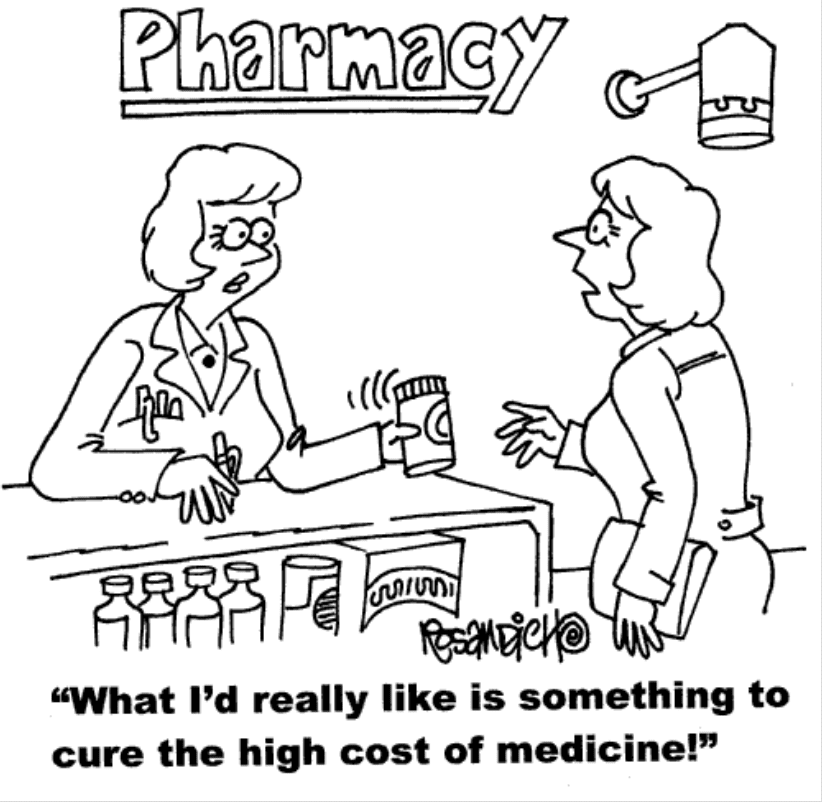
How to Save Money on Prescriptions
Consider the following tips to optimize savings on your prescriptions:
1. Opt for the Generic Version
Opting for the generic version instead of the brand-name drug can offer huge savings. Generic medications are the same as brand-name drugs in dosage, safety, strength, route of administration quality, and intended use. The significant difference between brand name and generic is the cost. The price difference out-of-pocket comes down to the patent behind the brand name. Speak to your physician about what your options are.
2. Ask for a Different Medication
Your physician does not know which medications are on your formulary, but it is likely they are familiar with alternative drugs that are used to treat the same condition. If your prescription is not covered by your insurance and requires a hefty out-of-pocket cost, ask your physician what alternatives exist. At Roots Health DPC we help patients obtain medication at affordable prices.
3. Change Your Pharmacy
Surprisingly, the cost of your medication can vary depending on pharmacies. You can try GoodRx for your prescription if you have to pay out-of-pocket and consider changing pharmacies for a better price.




